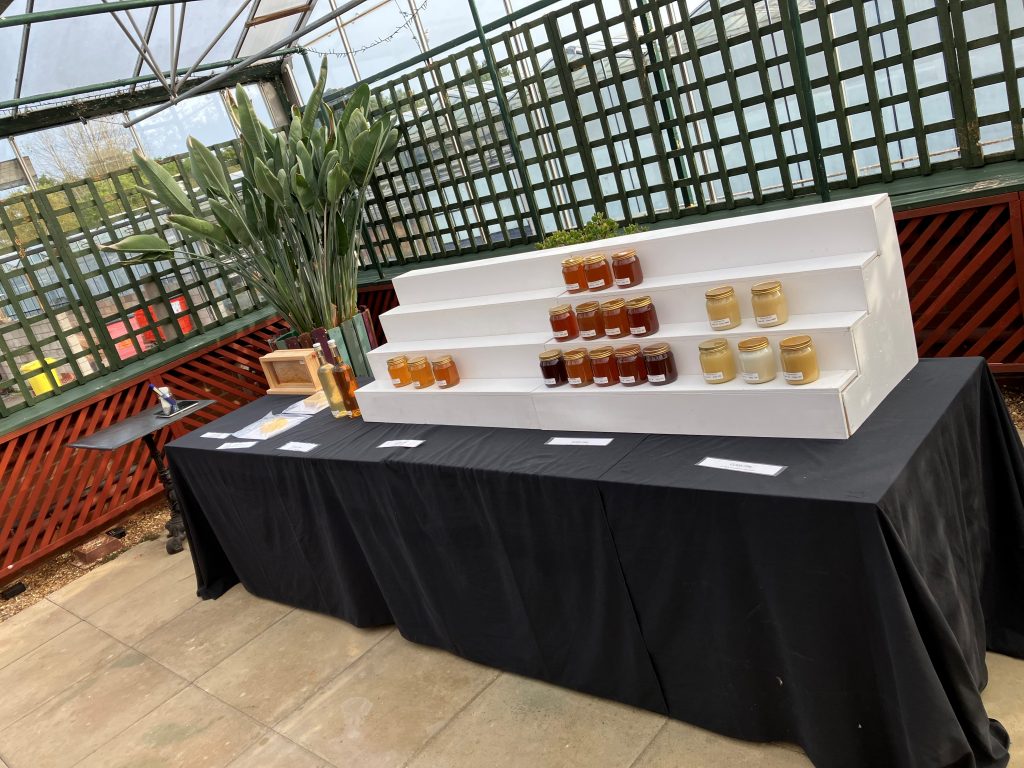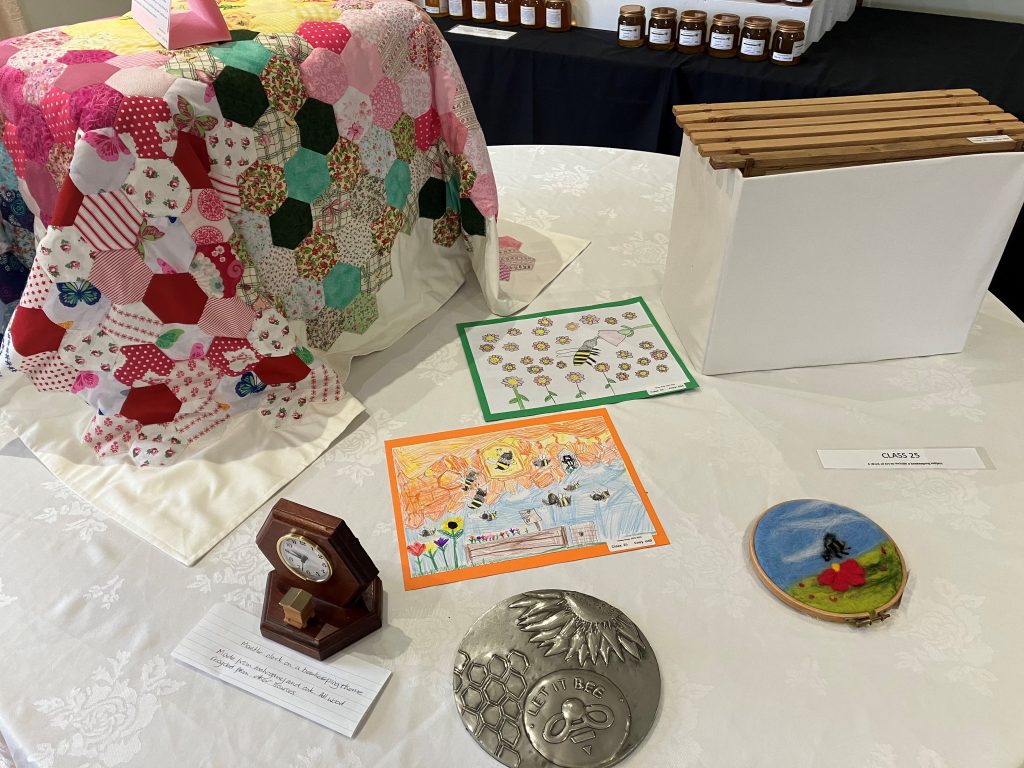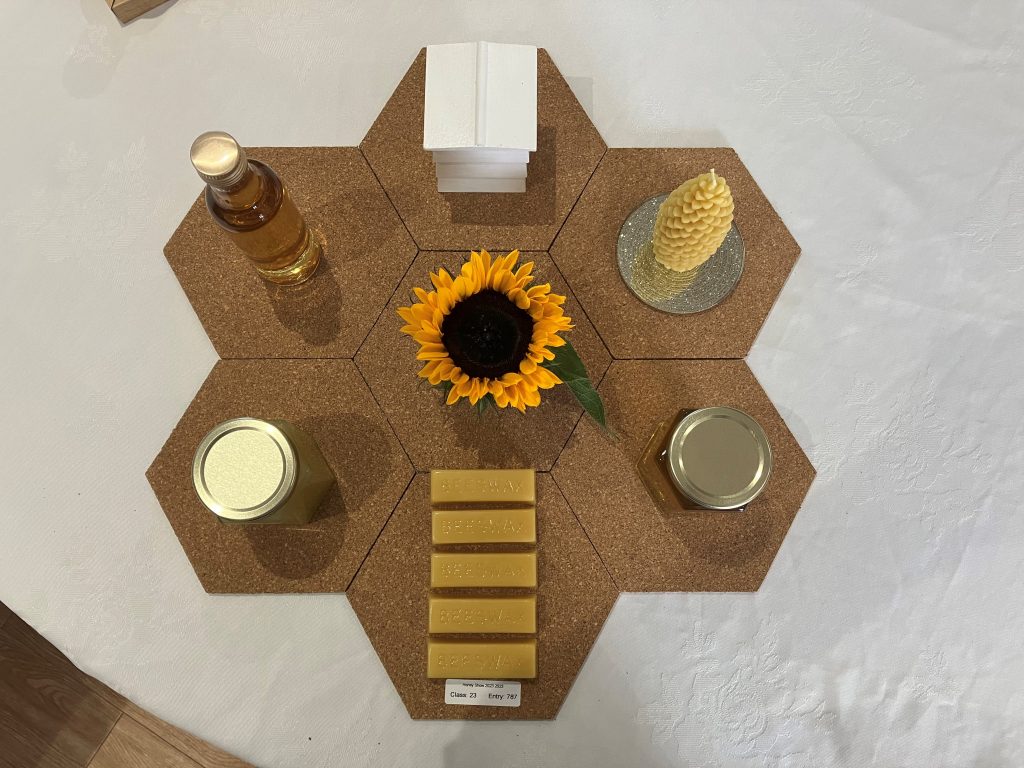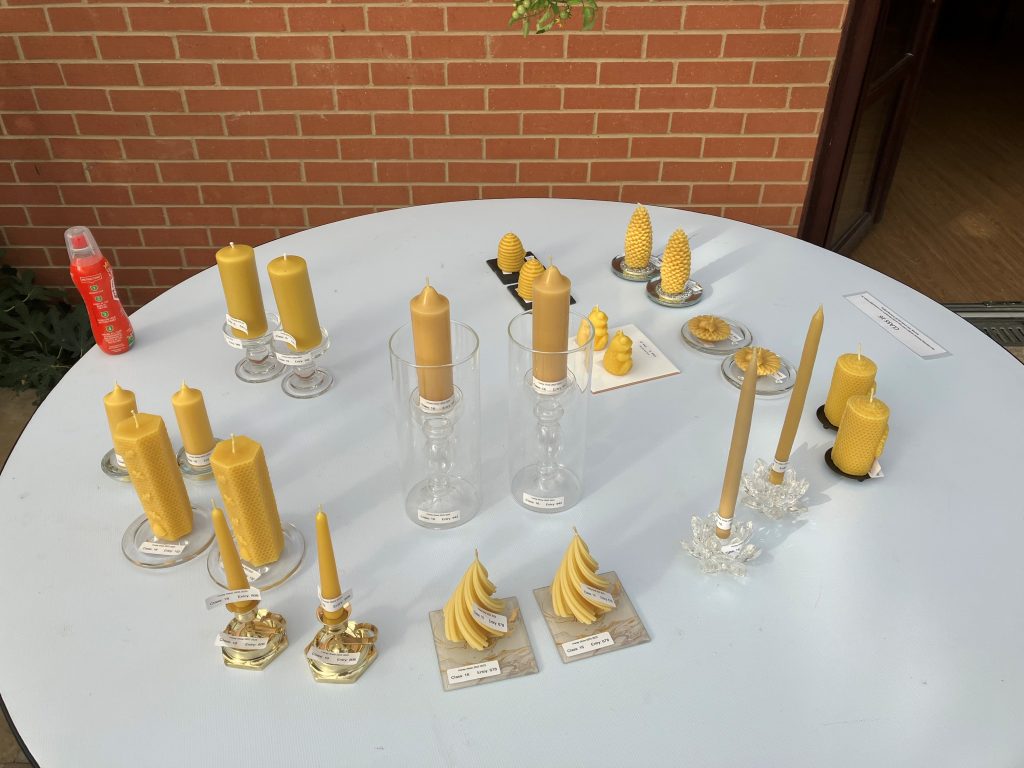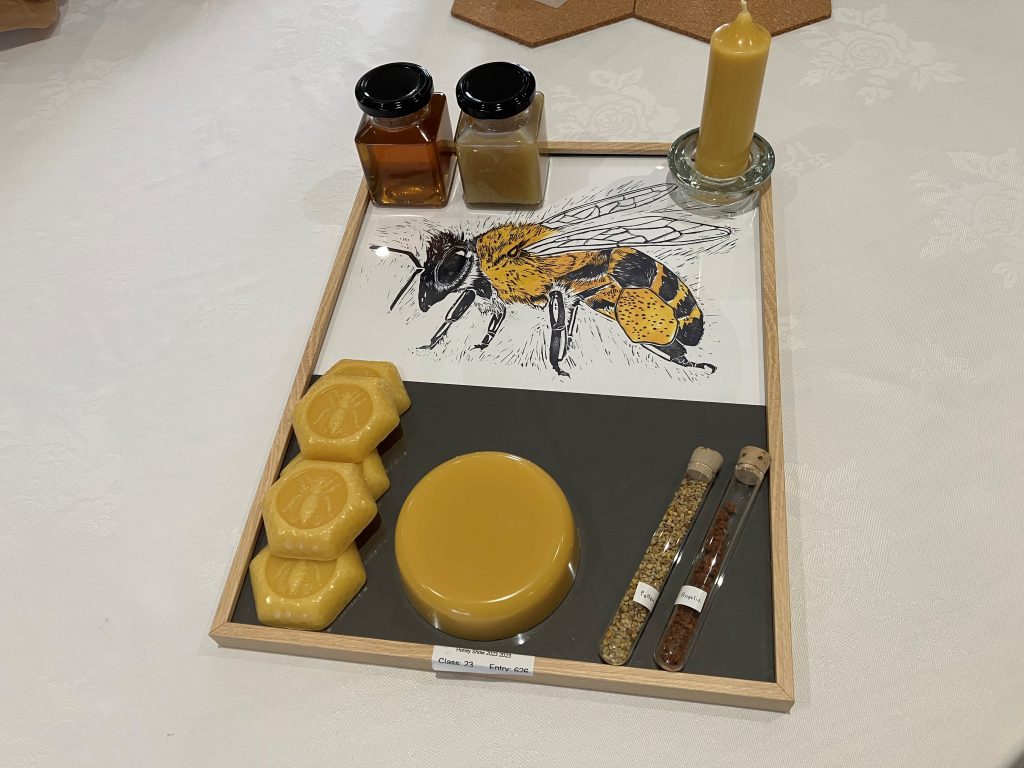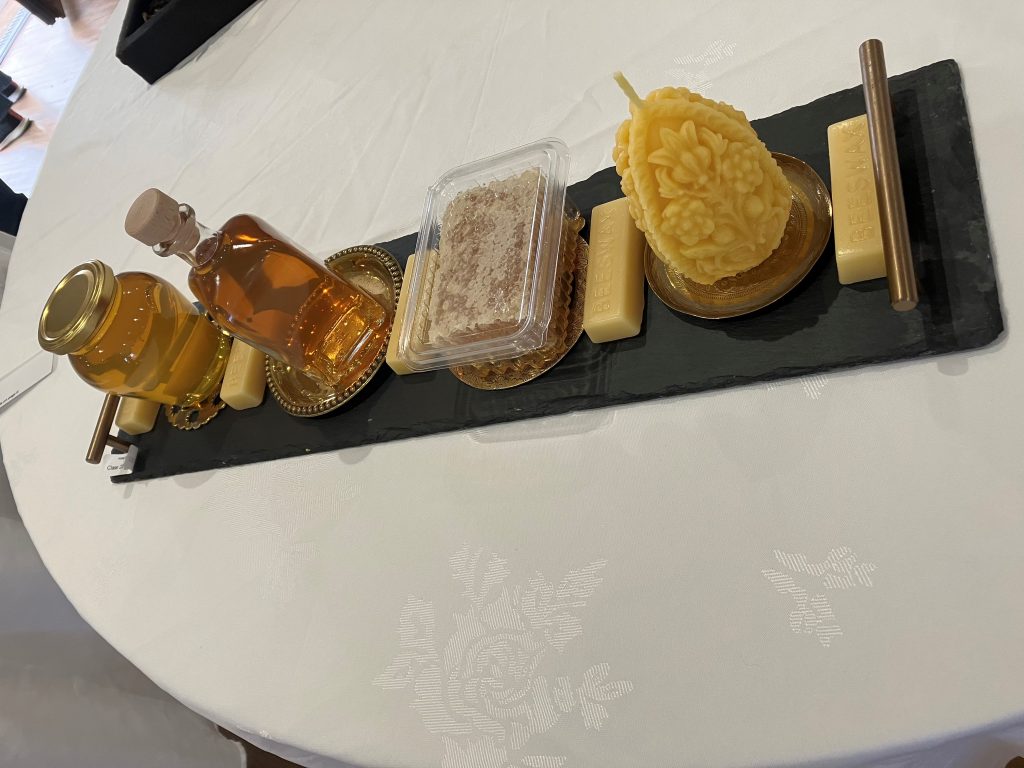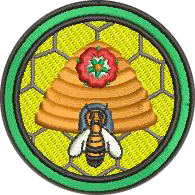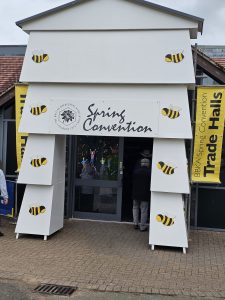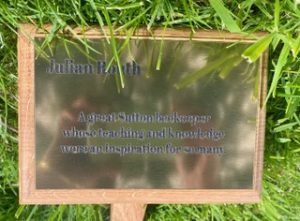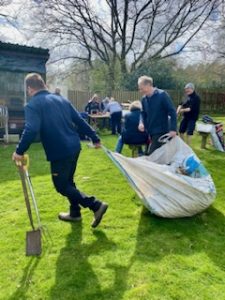By Julia Wigfield and Leonie Williams
It was an 08.00 start for staging at the venue in Coventry, Julia, Fiona & Leonie managed to finish staging with a little time to spare. Julia was one of the 3 stewards for the show. It was interesting to see some different classes from our own show, including 14 entries in 6 jars of honey, all one type & size labelled as for public sale, 3 classes for mead, dry, sweet & melomel, a class for 5 beeswax blocks, each 28g (+/-5g) uniformly shaped. There were plenty of exhibits in the light, dark, naturally crystallised & creamed or soft set honey together with heather honey, and an individual Composite Attractive Display where 5 items from a list of 9 were displayed, and of course 3 cake classes. Although members from Birmingham seemed to take all the silverware – Sutton branch came second with a total of 108 points. James won the Centenary Trophy for best exhibit in Class 20, light honey, Julia won 1st prize in the Dry Mead class, James won 1st prize in the Metheglin Mead class, Julia won 1st prize in the Crystallised Honey Class, Fiona won 1st prize in Honey cake to own recipe class, and Lee won 1st prize in the Novice Wax Class. As an added little bonus, Fiona & Julia came 2nd & 3rd respectively in the individual Composite Attractive Display.
It was lovely to have exhibits from members of our Association, Fiona, James Becca & Izzy, Julia, Leonie, Lee, Derek, Alison, Will VDM and Matthew with most of them winning a prize card or two.
Novice Entries
There were 6 novice categories at the County show comprising of frame for extraction, wax block, bottle of mead, light honey, medium OR dark honey and soft set. These were judged by Sharif Khan (Birmingham) and Douglas Nethercleft (Shipston) in an open forum. They started by alluding to the process that is required to becoming a certified Honey Show judge and explained their background and experience. Many useful hints and tips were offered and it was a real opportunity to learn more and ask any questions e.g. how do you actually taste the honey?
The main point that was emphasised was Schedule, Schedule, Schedule. The requirements for entering each category will be documented and potentially will be different from one show to the next. Although they both wanted to judge to encourage people, they also needed to be true to the schedule and the process. The initial step in judging will be to whittle down the number of entries and therefore – in the honey categories – they do look at the colour and state of the lid of the jar as well as wonky or incorrect labels!
They will ensure that the honey has been placed in the right category of light, medium and dark by validating the colour against the BD glasses – a recognised standard across honey shows – and named after the designer – our own Bernard Diaper.
Moving on from the initial visuals, they will then assess the clarity of the honey by holding a light either underneath or behind. They are looking for a starbright finish – any haziness or granulation will be noted and marked down – this can be reduced by warming the honey. An important factor in this assessment is whether the jar is underfilled and light can be seen between the honey and the lid.
Next step is opening the jar and capturing the aroma. They will look for anything on the surface of the honey – bubbles, scum and/or foreign bodies (eek).
If all of these elements are passed, they will taste the honey. They dip glass rods in the honey and hold it up to test the viscosity. They will wipe the rod on the back of their hand, which slightly warms the honey and then they will lick it off.
Each jar is moved to the correct order of placement and they can all move around during each of these stages. The biggest comments came about the best tasting honey which was placed lower in the rankings due to the elements covered here.
My favourite judging was of mead (and not only because of the tasting). They looked for the schedule compliance and the starbright quality, but then gave each bottle a sharp twist which sends any sediment rushing up from the bottom. When it’s poured, it gets swished around in the glass to assess the ‘legs’ running down the side. Finally, it’s the tasting and you could certainly see from the levels left in the bottle which ones were preferred throughout all of the judging.
I would encourage people to have a go and also take the opportunity to listen to the feedback provided. After all, this is yet another fascinating aspect to beekeeping that can be enjoyed.

